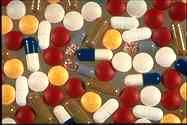
Part of a small virus that attacks only bacteria acts like an antibiotic to destroy E. coli, researchers with the Texas Agricultural Experiment Station have found.
A report on the antibiotic action of the small virus, “Q Beta,” is reported in this week’s Science magazine. The research was funded by the National Institute of Health’s general medicine institute.
The finding provides a new approach for designing drugs to combat many serious bacterial diseases, including E. coli, pneumonia, staph infection, ear infections, Lyme’s disease and cholera in humans, as well as bacterial diseases in pets, livestock and crops, according to Tom Bernhardt, biochemistry doctoral student, and Dr. Ing-Nang Wang, a lead investigator on the project.
New types of antibiotics are increasingly important because many disease- causing bacteria have become resistant to antibiotics, reducing the number of medicines available for treatment. Researchers fear that continued resistance could result in epidemics of diseases once thought controlled by antibiotics.
The research at the Experiment Station found that a protein within the small virus, known as a “phage” in scientific circles, does the same thing to bacterial cell walls as antibiotics. It blocks the ability of the cell to make its tough outer wall so bacteria blow up or destroy themselves rather than divide into more cells. Dead bacterial cells means an end to the illness.
“This ‘protein antibiotic’ is the answer to an old mystery: how Q-beta and other small phage kill bacteria,” said Dr. Ry Young, a biochemist in whose lab at Texas A&M University the work was done, in collaboration with Dr. Douglas K. Struck, a medical biochemistry and genetics professor. “Basically they let the cell commit suicide by dividing without making a new cell wall.”
Phages which are not the same type of viruses that infect humans, animals and plants are basically dormant bundles of DNA or RNA in protein coats until they come into contact with bacteria, Bernhardt said. They then go into action, replicating within the bacterial cell and, after only a few minutes, exploding it.
Researchers have known the DNA sequence of these small viruses for about 25 years. Because of their simplicity, phages were used to work out basic molecular biology, but were abandoned as researchers shifted to study higher organisms, animals and humans.
“As bacteria’s natural enemies, their potential as sources for ways to kill bacteria should have been thoroughly explored long ago,” said Wang, “but it is only now, with the emerging world-wide crisis in antibiotic resistance, that phages are finally gaining attention in their own right. It looks like small phages are a gold mine for protein antibiotics.” Young agrees.
“The important thing is that this is the second small phage which we have found to make a protein antibiotic, and other people in the lab are working on a third,” said Young, “Surprisingly, each of these phages makes a different type of cell wall poison, and each one is a potential new model for an antibiotic.”
The team hopes to find new small phages and use them to identify more ‘protein antibiotics’ that could be developed into practical medicines by the pharmaceutical industry.


















Comments are closed.